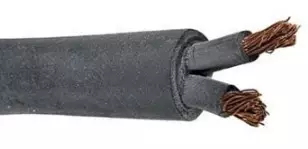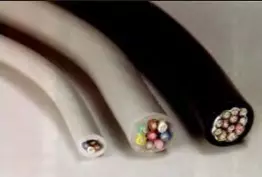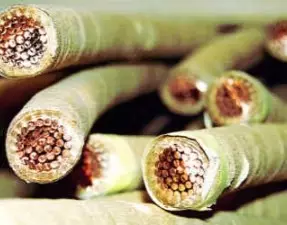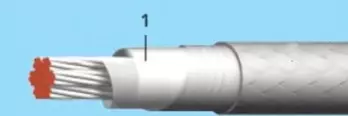More recently, we considered the labeling of cables and wires, however, our subscribers had many more serious questions about isolation. Therefore, in this article, we decided to tell in detail what kinds of insulation cables and wires exist at the moment. Consider the most popular insulating materials and highlight the most popular.
Types of insulation conductors
Initially, you should understand that the insulation is selected to each conductor individually, based on its design features and network voltage at which it will work. Based on this, you can select the following:- Cloud conductor, which are used on the network no more than 700 volts. They are designed for home use in a single-phase or three-phase network. That is, 220 and 380 volts, respectively.
- Cloudless cables that are used in networks, as in the first case.
- For conductors who work at a constant current of 700-1000 volts and a variable voltage of 220 and 400 volts.
- For conductors with voltage up to 3,600 volts. AC current in this occurs from 400 to 1800 volts.
- It is also worth highlighting the wires that are used at a voltage of 1000-6000 volts, with an alternating current of 400-1800 volts.
It is also worth considering here:
- Operating conditions.
- Specifications and other parameters.
- Cable cross section.
- Number lived.
Types of insulation for wires
As you understand, the insulation is selected individually to each conduit. Now allocate the following types of insulation of wires and cables:
Rubber insulation
It can be made of natural rubber or synthetic origin. The advantages of such insulation are that the wire receives high flexibility, which allows it to be used almost in any conditions. However, such insulation is not considered durable, since the braid after a certain time loses properties. Such insulation received a popular cable kg.
Article on the topic: How to choose a suitable interior design?
PVC
PVC insulation for wires is considered quite popular. Several advantages should be allocated:
- Low price during production.
- High elasticity, which is maintained at low temperatures.
- Heat resistance.
- Good protective properties.
However, several drawbacks can be distinguished:
- Over time, properties are lost.
- Also over time, the chemical resistance of the material is reduced.

Paper isolation
In modern cable products, such insulation is extremely rare, this is due to the fact that its throughput is no more than 35 square meters. However, if the paper is used in power cables, then manufacturers use a special impregnation, which includes oil, rosin and wax.
If we talk for disadvantages, they are significant, since the paper cannot carry the external impact. Accordingly, the conductors with such insulation can be found rarely, you can also install them only in dry rooms.
Fluoroplastic insulation
Fluoroplastic insulation of wires and cables is considered one of the most reliable. However, the procedure for using this isolation is considered quite complicated. After all, first fluoroplast is wound on cable veins, then it is started to bake at high temperatures. The result is insulation, which is difficult to damage.
Also read:
